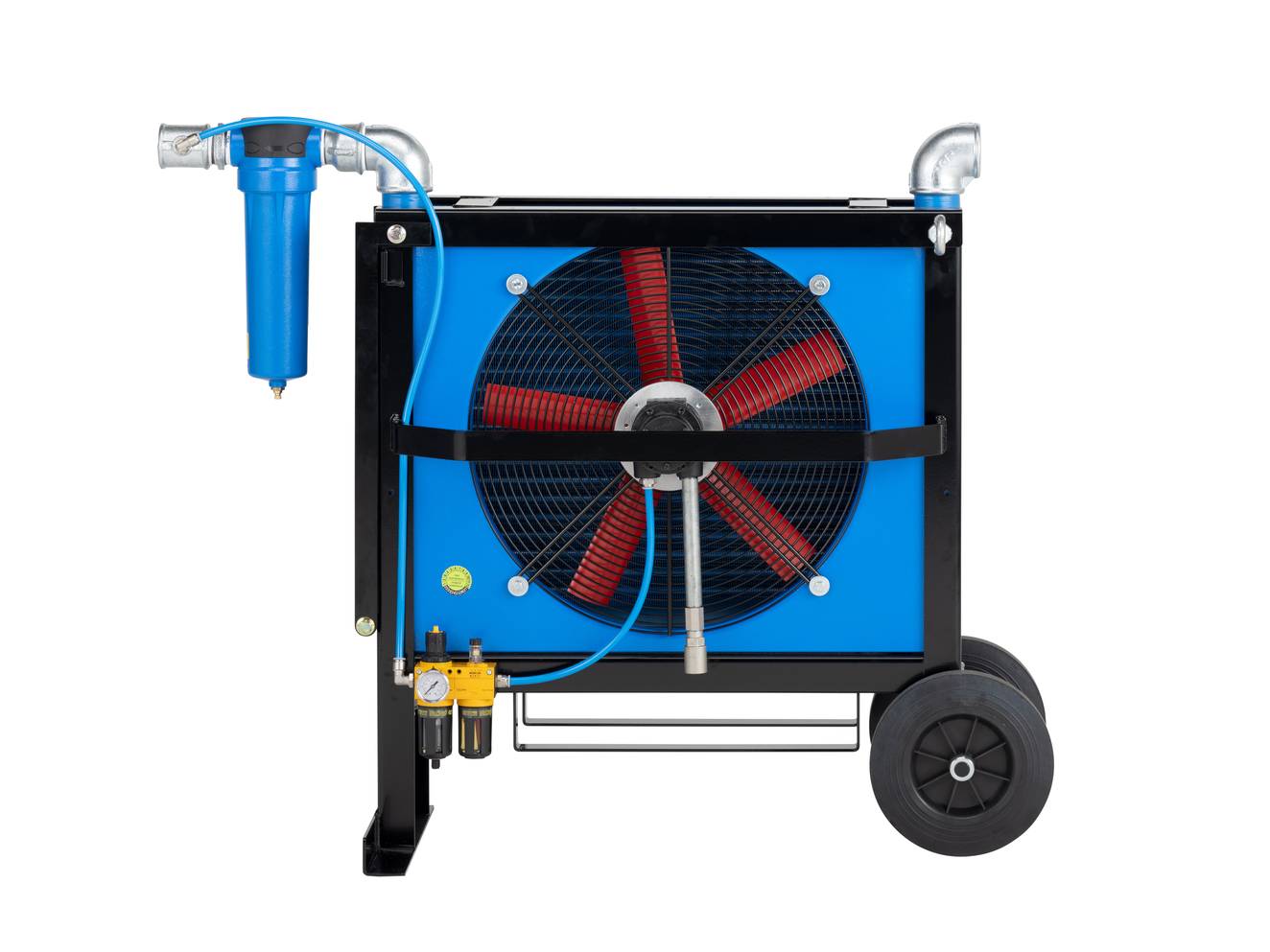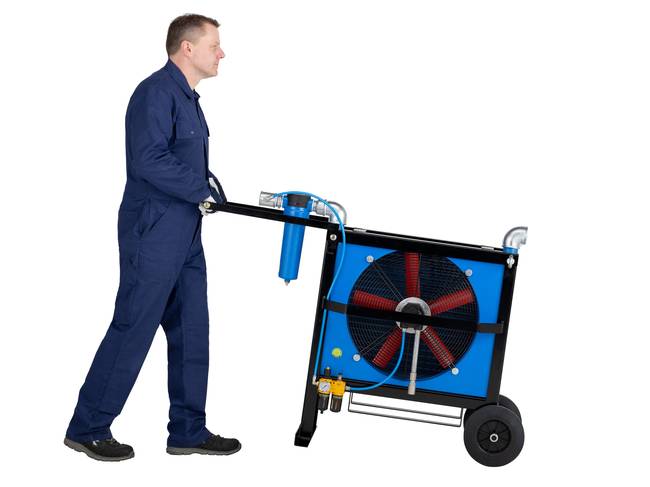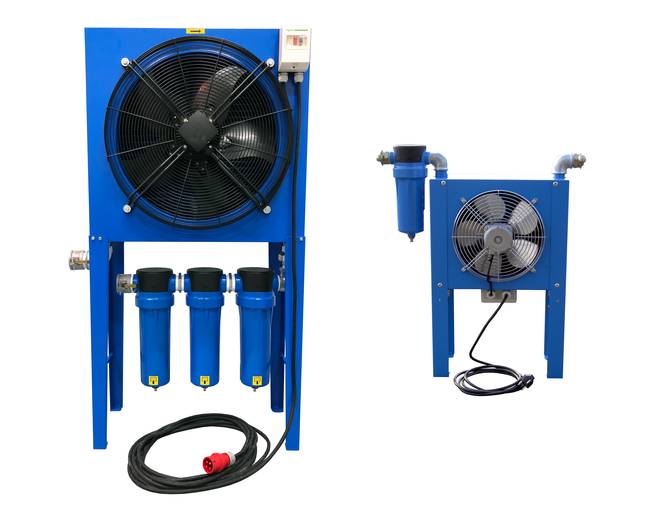Compressed air aftercoolers
Problem-free blasting starts with dry air. Moisture in compressed air can cause blockages, uneven abrasive flow, and poor surface results. Gritco aftercoolers keep your air dry and your blasting consistent. Reduce downtime, save abrasive, and achieve better results.
Free tailor-made advice
Every blasting job is different. That’s why we don’t sell standard products.
We offer the aftercooler that fits your compressor, your job and your location.
Cooling - Drying - Filtering
Moisture in compressed air can cause blockages, uneven abrasive flow, and machine problems. To ensure smooth blasting and avoid downtime, this moisture must be removed. Clean, dry air also improves the quality of the blasted surface, which is especially important for subsequent processes such as paint spraying or coating.
A Gritco aftercooler cools the compressed air from the compressor to approximately 9 °C above ambient temperature. This temperature drop causes moisture to condense into droplets, which are then removed by the centrifugal separator. For even higher air quality—completely free of oil and other contaminants—additional compressed air filters can be fitted, ensuring reliable performance and optimal surface results every time.
Key benefits
- Up to 85% drier air – No blockages, smoother blasting
- Lower abrasive use – because flow is constant better control of metering
- Better blasting results – cleaner surfaces, less rework
- Wide capacity range – 1 to 25 m³/min (35 to 885 cfm) for all sorts of jobs
- Quality construction – copper pipes, aluminium fins, built for best cooling results
Versions
Choose the setup that works for you:
- Air motor – mobile use, no electricity needed
- Electric – 400 V, 240 V or 12 V, compressed air efficient
- Frames – mobile and protected versions
- Options – filter set (1 and 0.01 μm), automatic drain system
Frequently asked questions
-
What is most important when buying an aftercooler?
Most important is that it cools down the compressed air to a maximum of 9 degrees compared to the ambient air (Delta T = 9). If this difference is greater, not enough moisture is condensed which can be separated. As a result, further cooling of the compressed air takes place in the blast pot, which will lead to moisture problems.
It is also essential that the capacity of the cooler and moisture separator matches the actual compressed air demand. A too large or too small model can still cause humidity problems in the blasting process.
-
Is the compressor’s built-in cooler enough?
Only if it has a Delta T of 9 degrees or lower. With most leading compressor brands, this is usually the case. Please note that sometimes the built-in cooler is also used to cool the compressor oil, which can lead to insufficient cooling capacity for the compressed air and therefore moisture problems in the blast pot. Therefore, always ask your compressor supplier about the Delta T of the aftercooler.
-
Pneumatic or electric model: what to choose?
A pneumatic model can easily be used anywhere, as compressed air is always available. However, pay attention to the compressed air consumption of the fan's air motor. In situations where compressor capacity is critical, an electric model may be the way to go. In stationary setups, an electric model is also often preferable due to lower consumption costs.
-
When should I add the filter set?
With fine abrasive, the more important the quality of the compressed air becomes to prevent blockages. The aftercooler's moisture separator removes most of the moisture. The additional filters of 1 and 0.01 microns remove not only the last remaining moisture, but also oil traces from the compressor. Especially with older (rental) compressors, this can be an extra advantage as they often let more oil through.
Ready to improve your blasting?
Tell us about your compressor and your blasting job.
We’ll give you a free, no-obligation proposal for the right aftercooler.



